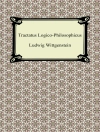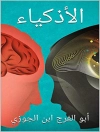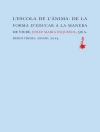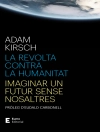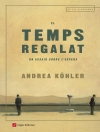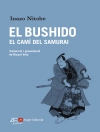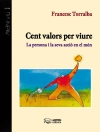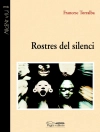The texts and notes collected in this volume offer unique insight into the development of Heidegger’s thinking on language and art from the late 1930s to the early 1950s – a tumultuous period both for Heidegger personally and for Germany as a whole. Following Germany’s defeat in World War II, Heidegger was banned from teaching at Freiburg University, where he had been a professor since 1928, and his thinking underwent significant changes as he began to cultivate different modes of silence and non-saying in his philosophy of language. This volume illuminates these shifts and charts the evolution of key terms in Heidegger’s philosophy of language during this key period in the development of his thought.
The central theme of Heidegger’s reflections on language in this volume is his repeated engagement with the character of the word, silence and the unsaid, and his rejection of the instrumental conception of language, where he instead prioritized conversation as the “homeland of language.” Alongside references to Hölderlin and von Hofmannsthal and shrewd scrutiny of aural phenomena such as silent thought and speechlessness, speech is demonstrated to be intimately connected to the human essence. In a later section, Heidegger examines the place of art, in particular the plastic arts, and the role of the artist in conjunction with the new industrial landscape and architecture of his time, and in juxtaposition with ancient Greek attitudes to space and the polis.
This key work by Heidegger, now available in English for the first time, will be of great interest to students and scholars of philosophy and to anyone interested in Heidegger’s thought.
สารบัญ
Translator’s Introduction
Part One: On the Essence of Language
The Saga
1. The Resolution
2. The Characteristics of the Decision
3. The Question of Being
4. The Question of Being (The First and the Other Inception)
5. The Two Leaps in the Attempt to Think Being
6. The Three Insights and Knowledge
7. Beyng, “Spirit, ” Cognition
8. The Saga
9. The Beyng-Historical Inception
10. The History of Beyng
11. “The History of Philosophy” and the History of Being
12. Beyng-Historical “Thinking”
13. Steadfastness and Thinking
14. The “Concept” – Distancing – Naysaying
15. The No of Beyng-Historical Thinking
16. Naysaying and Questioning
17. The Word
18. Beyng and Word
19. Beyng as the Appropriating Event (The Human)
20. Beyng and Attunement
21. Beyng
22. The Nothing and Beyng
23. Beyng as Nothing
24. The Nothing
25. The Event of Appropriation
26. Event of Appropriation
27. Beyng
28. Beyng, God, the Human
29. Beyng
30. Beyng is and only Beyng Is
31. Abyssal Ground
32. Beyng
33. The More Inceptual Saga
34. The Untenability of the Differentiation between “Being” and “Becoming”
35. Truth and System
36. The Attunement of the Voice Determines
37. Where is a Measure?
38. Not What “is Coming”
39. What Are “We” To Do
40. Not a “New” Philosophy
41. Where Do We Stand? Directed Toward the History of Beyng
42. A Curious Delusion of this Age
43. Steadfastness and Duty
44. The Saga
45. The Crux of the Error
46. Time-Space (cf. Contributions, Grounding)
47. The Temporalization of Time
48. Time-Space
The Word. On the Essence of Language
The Quickening Element of the Word
The Birth of Language
The Beginning
The Unique Element
Addenda
Word – Sign – Conversation – Language
I. The Word and Language
II. The Sign (Its Essence Bound to the Event)
III. The Word. Conversation and Language
IV. The Word (CF. Poetizing and Thinking)
V. The Word and Language
VI. Word and “Language”
VII. The Essential Prevailing of the Word
VIII. Image and Sound – The Sensible
IX. Language
X. Language
On Eduard Mörike’s Poems “September Morning” and “At Midnight”
ADDENDA Image and Word
Part Two: On the Question of Art
On the Question of Art
Art and Space
The Work of Art and “Art History”
Reflection upon the Essence and Conduct of the Art-Historical “Science”
Editor’s Afterword
Glossaries
English–German
German–English
เกี่ยวกับผู้แต่ง
Martin Heidegger (1889-1976) was one of the most influential philosophers of the twentieth century and the author of numerous works including Being and Time.


